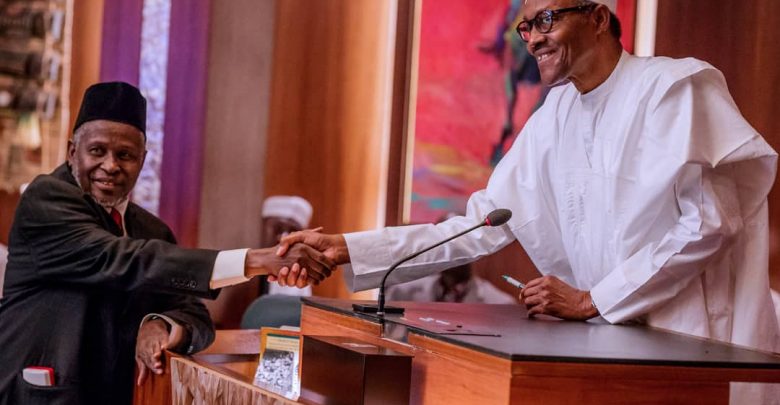Whereas President Muhammadu Buhari has approved recommendations of a committee to review “with dispatch,” the 1965 Northern Nigeria Law that established 368 grazing sites, across 25 states in the country, “to determine the levels of encroachment,” legal experts have stressed that the efforts are in futility considering the fact that the 1978 Land Use Act has rubbished the 1965 law as it relates to land after all.
They argued that by virtue of the LUA, control of lands in each state is vested in the governor and not the Federal Government. Otherwise, state governors, and not the President of the Country hold the lands in trust for states’ citizens.
Already, all the 17 southern states at a recent meeting in Lagos, agreed to enact an Act proscribing open grazing even as some of the 19 northern states have taken the lead in anti-open grazing law including Benue State.
Rivers State Governor, Chief Nyesom Wike, Friday signed into Law the State’s Anti-Open grazing Bill into law.
Going down memory lane, Dr. Ismaila Iro, Grazing reserves in Nigeria started during the pre-colonial era. Although formally introduced by the British, grazing reserves were demarcated by the Fulani who conquered and ruled Northern Nigeria. The attempt by the British in 1940 to separate the grazing land from the farm land, however, faltered because the Europeans imposed land use controls divorced from economic and demographic dynamics in the pastoral system. Formal grazing reserves in Nigeria started accidentally in the 1950s when Hamisu Kano, working with pastoralists on livestock vaccination, foresaw the shortages of grazing land in Northern Nigeria.
Supported by the government, he initiated the grazing reserve scheme from the abandoned government resettlement schemes (Fulani Settlement Scheme). The resettlement schemes collapsed because the government had neither the financial nor the managerial ability to continue with the financially burdensome scheme, and the best alternative use of the land, the government thought, was to convert it into grazing reserves that were less financially committed. Grazing reserve hatched in 1954 after a study of the Fulani production system contained in the “Fulani Amenities Proposal.” The proposal suggested the creation of grazing reserves, the improvement of Fulani welfare, and the transformation of the herd management system. By 1964, the government had gazetted about 6.4 million hectares of the forest reserve, ninety-eight percent in the savanna. Sokoto Province had twenty-one percent of the land, followed by Kabba, Bauchi, Zaria, Ilorin, and Katsina, with 11-15 percent each. The Wase, Zamfara, and Udubo reserves followed in succession.
In 1965, the Northern Nigerian Government incorporated the Fulani Amenities Proposal into the Grazing Reserve Law. Before the enactment of the Grazing Reserve Law of the Northern Nigeria, the pastoral Fulani relied on the goodwill of the farmers, who conferred upon themselves the lordliness of occupied and unoccupied land. Because interpersonal and kinship affiliations governed the dispensation of land, the Fulani worried about being evicted from the land when their relationship with the hosts become strained.
Business Hilights recalls that the President’s directive followed his approval of the recommendations of a committee chaired by the Chief of Staff to the President, Prof. Ibrahim Gambari.
Among others, the committee had recommended the collection of field data collection on 368 Grazing Reserves across 25 states to assess encroachment and encroachers, stakeholder engagements and sensitisation.
The Committee also recommended production of maps and geo-mapping/tagging of sites, analysis of findings and report preparations as well as design appropriate communication on Grazing Reserves and operations.
The number of the Grazing Reserves and States were deduced from considerations of existing security concerns and other pre-existing socio-economic conditions.
The President directed that the assignment be undertaken with dispatch to bring more understanding on the Grazing Reserves, and implementation.
Members of the committee include, Governor of Kebbi State and Vice Chairman, National Food Security Council, Abubakar Atiku Bagudu, Governor of Ebonyi State and Chairman of NEC Sub-Committee for National Livestock Transformation Plan, David Umahi, Minister of Water Resources, Suleiman Adamu, Minister of Agriculture and Rural Development, Sabo Nanono, Minister of Environment, Dr. Mohammad Mahmood Abubakar and Deputy Chief of Staff, Ade Ipaye.
The Technical Sub-Committee consists of representatives from the seven members of the main committee in addition to representatives from Ministry of Justice, Surveyor General of the Federation, National Agricultural Land Development Authority (NALDA) and National Space Research Development Agency (NASRDA).
The committee will also make recommendations for gazetting of ungazetted grazing reserves and create a data base of national cattle herders and ensure that grazing reserves are well communicated to all stakeholders. The inaugural meeting of the Committee was held on May 10, 2021.









